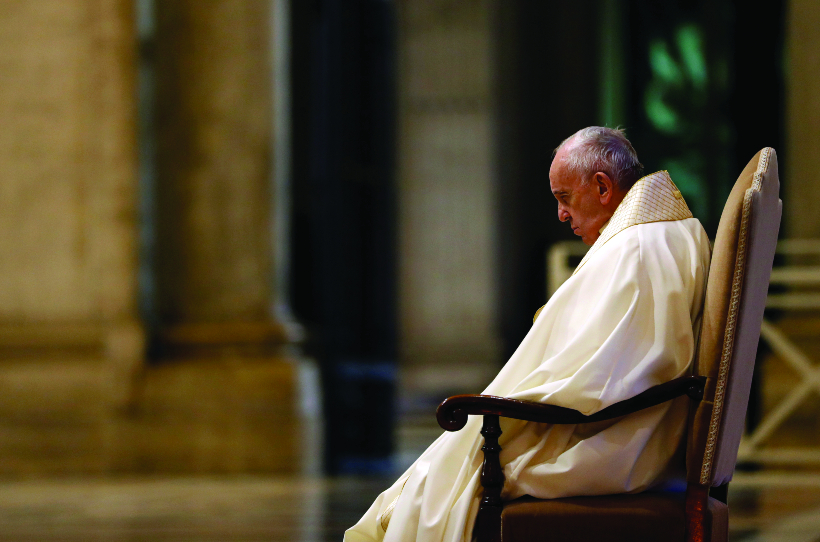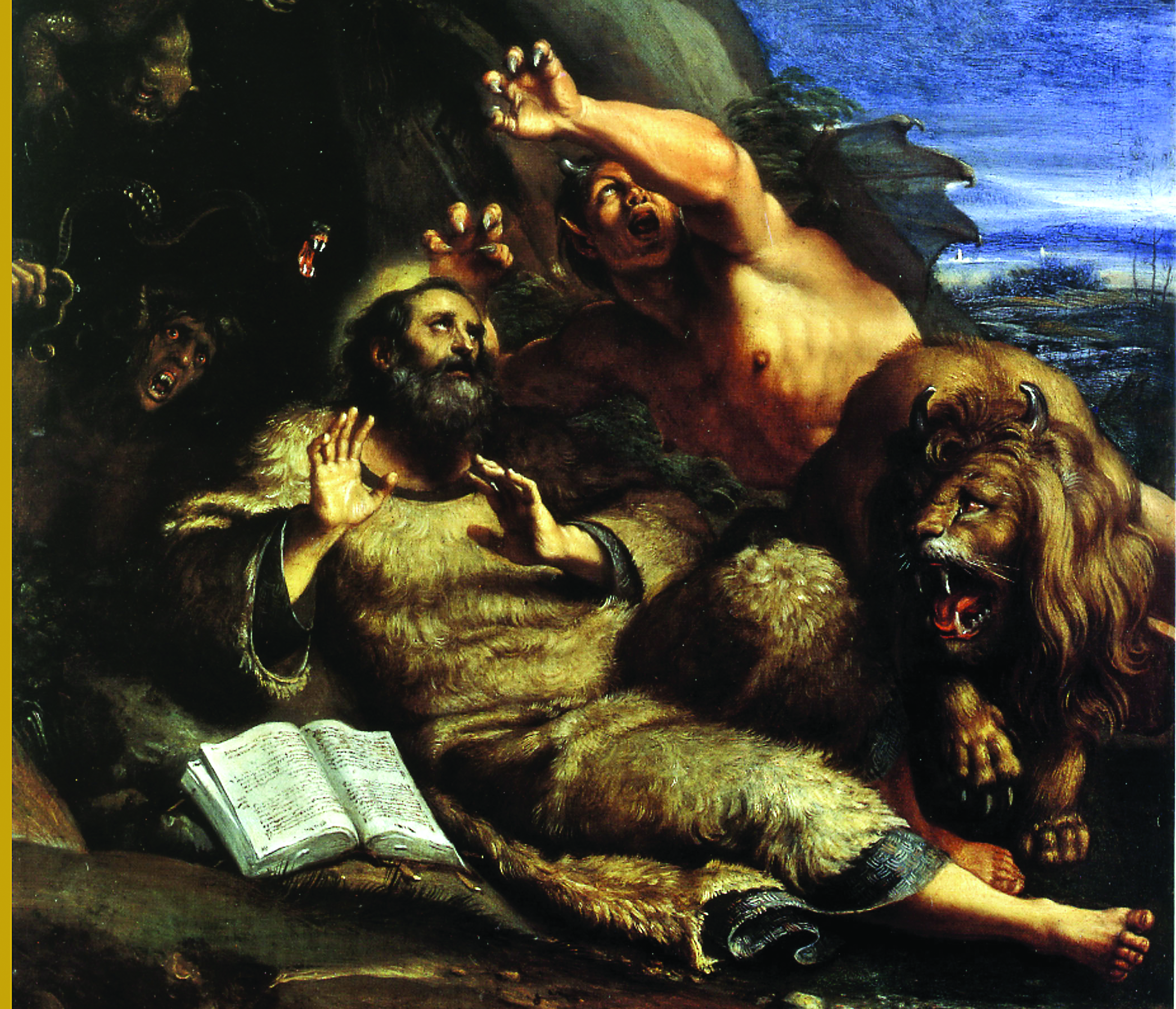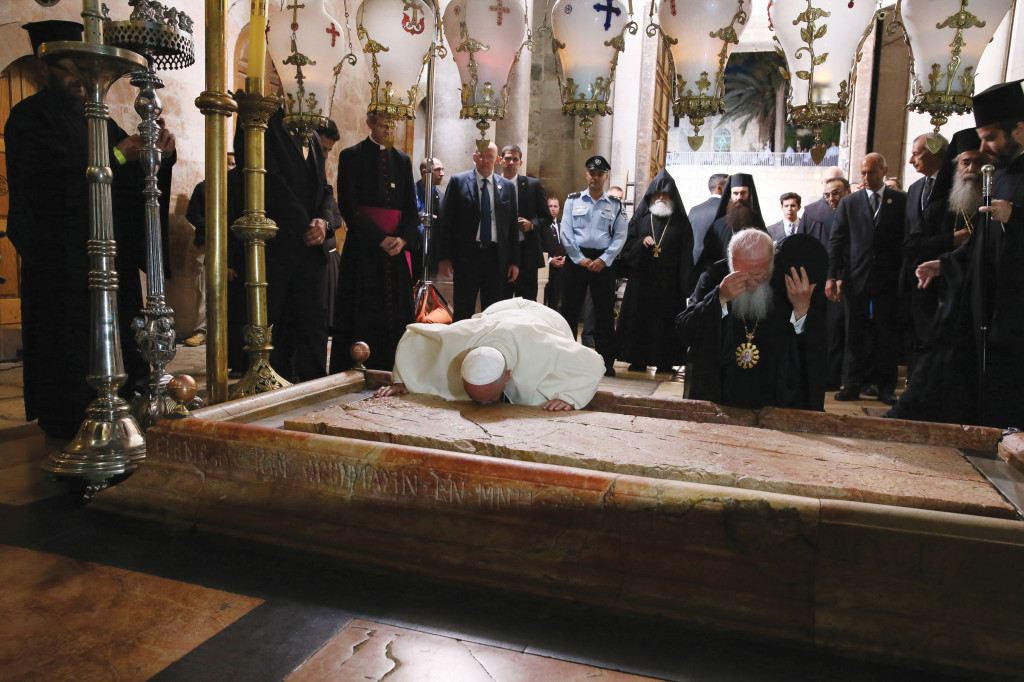“I arrived in Italy on the same day as Bob — on May 17, 1984. He arrived in Rome by plane from the United States; I entered northern Italy by bus from Poland. I wanted to be at Monte Cassino on May 18, but the pilgrimage was organized in such a way that we were there two days later.” And so, in this way, 30 years ago, began three men’s extraordinary adventure and passion to follow the Pope and the Vatican: Polish photographer Grzegorz Gałazka, American journalist Robert Moynihan, and Italian graphic designer Giuseppe Sabatelli, who together in 1993 launched Inside the Vatican magazine. To talk about the beginning of the magazine, its history, and the three Popes who have reigned during these years, I met Grzegorz on a beautiful Roman day in October.
How was Inside the Vatican born?
Grzegorz Gałazka: Inside the Vatican was born by sheer coincidence 20 years ago at one meeting with Bob when he told me that he wanted to make a Vatican news bulletin. I suggested that we add photos so that it could become almost a magazine. In this way, we prepared our “Zero” issue. The cover was in full-color and the photos inside were, due to cost, black and white. We wanted to see if it was going to evoke a response, if there would be readers. To create that first issue, we turned to an Italian graphic designer, Giuseppe Sabatelli. That first “dummy” issue came out in April, and the first regular issue was released in August-September 1993. And thus Inside the Vatican magazine was born.
An important role and contribution in launching the magazine was played by the Polish Airlines, LOT. There was a LOT advertisment on the back cover, and that first money was very precious in starting the magazine.
What issues did the first issues cover?
Gałazka: The idea of the magazine was to inform readers about the Vatican and through the photographs to show the events, unique moments and life of the Vatican, to encourage our readers to come to Rome to meet the Pope, at that time John Paul II.
Later, the magazine’s coverage expanded to include the Church in different countries and other topics such as ecumenism and interreligious dialogue. We also began to publish a regular Photo Essay. After a few issues, we received positive feedback from the Vatican and our readers, mostly in America. In those first years, the number of subscribers increased very quickly; we had a lot of readers, so it gave us hope that there was a need for such a publication and that we should continue.
The year 1978, when the Polish Pope was elected, changed your life. When did you make the decision to come to Rome to follow John Paul II’s pontificate?
Gałazka: In 1978 I never thought I would go to Rome. In fact, I mostly wanted to go, not so much to Rome, but to Monte Cassino where my grandfather had fought. As a young man, I was interested to see what it looked like. Of course, when Cardinal Karol Wojtyła was elected Pope John Paul II, my desire to see him and to photograph him discreetly was increasing and becoming stronger. Finally, I was able to come to Rome in 1984, and since that moment, I’ve been here.
What attitude did John Paul II have toward the media?
Gałazka: John Paul II very often joked with photographers and journalists, and also, quite often he smiled at us. He knew that our job was necessary, that thanks to us his message reached the world. He knew that, thanks to photography, people can learn more about the Pope’s life and the Vatican’s life and work. He knew and appreciated journalistic work very well. Being photographed wasn’t a problem for him.
At the same time, he was able to remain in deep prayer…
Gałazka: Yes, it’s true. I had a chance to notice that often, especially during his trips inside Italy and abroad. Even if there were photographers and the click of camera shutters was disturbing the atmosphere of silence, I believe he wasn’t disturbed. He was so deep in prayer that everything that was around didn’t distract him. He had such a special gift that among crowds and chaos he remained calm and sure about his duties. He was very focused.
The photographic essay in this issue begins with a signature gesture of John Paul II — his kissing of the ground upon arrival in a new country…
Gałazka: John Paul II made 104 pilgrimages. Every time, in every single country, he kissed the ground upon arrival. When he was younger and stronger, he kneeled to kiss directly. When he became older and he couldn’t bend himself, someone brought him soil to kiss. This was such a characteristic gesture of John Paul II. Only he did this. I do not think that any of the Popes before him did it, and his successors have not done it. I understood what this gesture meant through his words. He was always stressing that the ground is like a mother, and a mother is due respect. The gesture of kissing the ground is also a sign of respect for a mother.
You were also able to photograph more private moments of the Pope’s life…
Gałazka: I had a chance to photograph John Paul II at the papal summer residence in Castel Gandolfo. Here is a photo taken while John Paul II prayed in his private chapel. There is an icon of Our Lady of Czestochowa. It was placed there, not by the Polish Pope, as some may think, but by Pope Pius XI. You can’t see in this photo, but on the wall there are two frescoes, one depicting the Defense of Jasna Góra, the other the Battle of Warsaw, or the Miracle at the Vistula in 1920, when the Bolsheviks were capturing Polish territory and were moving toward Warsaw, the capital.
According to some, a miracle occurred. Others say it was Piłsudski’s wise strategy that brought victory to the Polish side. The defeated Soviet Army had to go back to Russia.
It should be recalled that when the Bolsheviks were nearing Warsaw, all the diplomats left the capital city apart from the Apostolic Nuncio Achille Ratti, later Pope Pius XI.
Out of his respect for Poland he asked to have these frescoes made in the Chapel and to place there the icon of the Black Madonna, Queen of Poland. They are still there now. I had an opportunity to photograph Pope Benedict XVI in the same chapel in front of the same icon.
The year 1920 was also the year John Paul II was born…
Gałazka: Surely. The year 1920 was the year of his birth. During the apostolic visit to Poland in 1999, he visited the cemetery in Radzymin where there are tombs of soldiers who died in the Polish-Bolshevik War. The Pope thanked them for their sacrifice which allowed him to grow up and live in a free Poland.
John Paul II also had profound respect for his predecessors…
Gałazka: I present here a symbolic photo. Every November 2, on All Souls’ Day, the Popes go to the Grotte Vaticane to pray at the tombs of their predecessors. I had an opportunity to take the photos when John Paul II prayed at the tomb of John XXIII whom he later proclaimed Blessed. Soon they both will be canonized (in April 2014).
This is a significative and symbolic photo, especially because in the same tomb where John XXIII was buried, John Paul II was later buried.
Under the pontificate of John Paul II, photography had a dynamic development. You took many unforgettable photos like the one used for the beatification portrait…
Gałazka: Photography under the pontificate of John Paul II was a little different than it is today. Above all, there was no digital photography yet and there weren’t so many photographers with small cameras or cell phones. Not everyone was able to take a photo; it required some skills. I remember a photo from my archive where John Paul II is moving around in a car in St. Peter’s Square. Thousands of people were greeting him, but only two or three of them, maybe, had cameras.
Today, when Pope Francis is in St. Peter’s Square, or, in past years, when Benedict XVI was there, almost everyone is taking photos with small cameras, smartphones or tablets. It is very hard to find a single person who is greeting the Pope. Although the technology has developed considerably, the quality of many of those photos is still very poor.
For the 2011 beatification portrait, my photo was chosen for the official banner. I took the photo during one of John Paul II’s visits to a Roman parish. I remember it was a short meeting with small children who asked him questions. I did three or four portraits. Those photos remained in my archive.
We didn’t even use them for Inside the Vatican. Actually, I don’t know why I didn’t notice them. When I looked for photos in my archive for the beatification, I found that series of photos. After I submitted one of them, it was approved and chosen as an official portrait of John Paul II. I am happy that I was able to photograph a holy man and that a photo I took served people around the world as an image of this new saint.
The magazine also often depicted Cardinal Joseph Ratzinger, who became John Paul’s successor…
Gałazka: As a photographer of Inside the Vatican, I went together with June Hager to the Holy Land for a 1994 conference on interreligious dialogue. Present were Cardinal Ratzinger, Cardinal Martini and many other bishops as well as representatives of the Jewish community. I learned that Cardinal Ratzinger was planning to go privately to Bethlehem. I truly wanted to take photos of that pilgrimage. But having talked with the cardinal and his secretary, they made me understand it wouldn’t be possible in Bethlehem, but if I wanted to, I could accompany the cardinal on his visit to Jerusalem. Of course, I did so, and for three hours I took photos which I am happy about, as they are very private and personal. Of course, nobody at that time thought that he would be the future Pope Benedict XVI.
At the end of the day, as I was going back to the hotel in a cab, someone from the crowd was trying to stop my taxi. And at that moment, I recognized that it was the cardinal’s secretary, Msgr. Josef Clemens. I asked my driver to stop. At that time it was difficult to find a cab. Cardinal Ratzinger wanted to go to Bethlehem. I said I would be willing to give him a lift. He said to drive first to the hotel and then they would go on their own to Bethlehem. So, I repeated my proposal.
Cardinal Ratzinger answered with a smile that probably Divine Providence wished it that way, and there was no other way. So, finally, we went together to Bethlehem.
I respected the cardinal’s wish that the visit was to have a private and prayerful character. I took a few photos, not too many. Of course, today I wish I had taken more. When Cardinal Ratzinger became the new Pope eleven years later, at my first opportunity to greet the new Holy Father, he reminded me of that visit to the Holy Land. It was so nice that even having so many important matters to attend to, he remembered that. Later I had a chance once again to be with him during his visit to the Holy Land as Pope Benedict XVI.
Did you ever imagine that Cardinal Ratzinger might become John Paul II’s successor?
Gałazka: There were a lot of candidates. I think that only a few thought that Cardinal Ratzinger would become a Pope after John Paul II, as he was a very diligent cardinal and not looking for any publicity. His election was kind of a surprise. A positive one, as he was John Paul II’s closest collaborator and friend. I was glad, because as a photographer I knew the newly-elected Pope pretty well. So for me it was a great joy. Some think that John Paul II may have indicated him as his successor, but the cardinals made their choice according to their own feelings, so I doubt there were such indications. On the contrary, it is said that the Holy Spirit does His work, and in this case it was clear.
Do you remember your first meeting with Cardinal Bergoglio, now Pope Francis?
Gałazka: It was during the Consistory of 2001. Probably it was the biggest Consistory ever held in the Vatican. John Paul II created 44 new cardinals, among them Archbishop Jorge Mario Bergoglio. The very first photo of him I took was from above while he was receiving the cardinal’s red biretta and then at the reception at the Embassy of Argentina to the Holy See, by whom I was employed. I asked the new cardinal if I could take some private photos of him. He didn’t like to pose; he preferred more to be among people than on his own. When I observed him while taking the photos, his contact with others wasn’t so forthcoming as it is today as Pope Francis. Probably, there is some reason, as a Pope has other gifts than he had as a cardinal.
How did you react to his election?
Gałazka: When Bergoglio’s name was announced, one person in the Italian delegation of the mayor of Rome, who was standing next to me, didn’t know where the new Pope was from. That man thought he was Brazilian. Immediately, I explained that he is from Argentina, a Jesuit with Italian roots. I only made a mistake in his age. His election was a surprise for most of the people in St. Peter’s Square. The second surprise was the name he chose, Francis.
How would you compare the three Popes?
Gałazka: John Paul II was first of all a very open man. A holy man. In a few months he will be canonized together with Pope John XXIII. A multi-faceted man. He confronted many difficult questions. And he did it well. At least I don’t know of any other person in the past or the present as gifted as John Paul II was. He caused some agitation in the Vatican. He broke the rules, he went to visit the sick. He traveled to different places. All of them have their own style. What Francis is doing now began with John Paul II.
Pope Benedict XVI was different. He was a very humble Pope. There were fewer gestures because he is a more private man. I personally empathize with Benedict. It would be difficult also for me to come out and greet people in the way John Paul II did or in the way Francis does. It would be false. It isn’t my gift nor my character. So, I understand Benedict quite well. He never imitated John Paul II’s gestures, because they weren’t his.
He remained himself, kept his authenticity. This doesn’t mean he was worse. It is impossible to compare them in this way. I remember when I spoke with him twice or three times when he was already a Pope. He was always cordial. Everybody is different, whether John Paul II or Benedict XVI or Francis.
Significative were the words Pope Francis addressed to the faithful after his election: “You know that it was the duty of the Conclave to give Rome a Bishop. It seems that my brother Cardinals have gone to the ends of the earth to get one…,” which harkened back to John Paul II’s words pronounced under the same circumstances: “So the cardinals have called for a new Bishop of Rome. They called him from a faraway land.” It was a wordplay which in a significant way illustrated the novelty in these papal elections, one of that time, divided by the Iron Curtain, the other of our time, when the world has become a global village.
Pope Francis’ peculiarity is that when he goes around St. Peter’s Square, people get so used to him that they hand him different things, and if they can’t, they toss them over and the Pope catches them. During the Mass on a Marian day when he was going around the Square, I was able to take a photo when someone tossed him a rosary and it landed on the Pope’s ear.
These are moments that weren’t present under John Paul II and Benedict XVI. Nobody threw anything. Now, people have become quite familiar with the Pope.





Facebook Comments